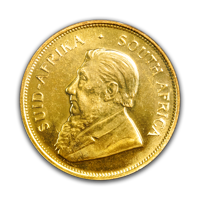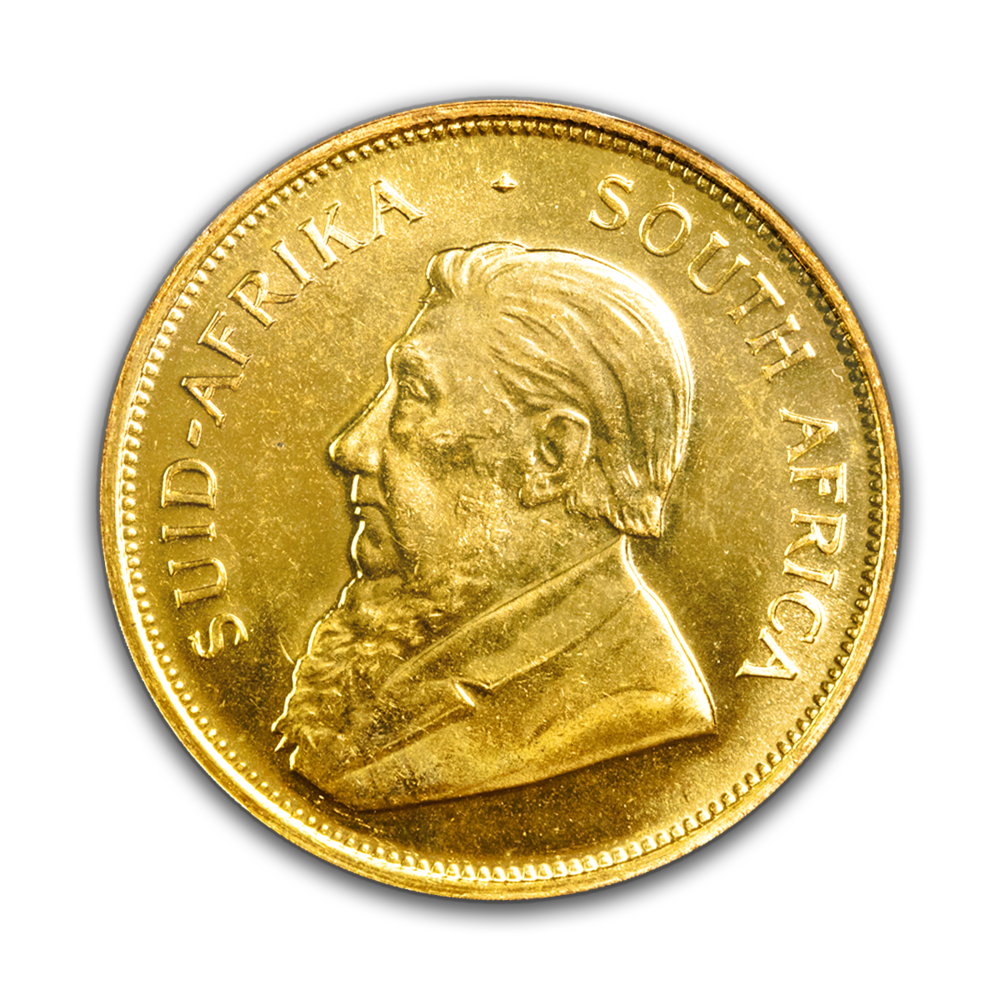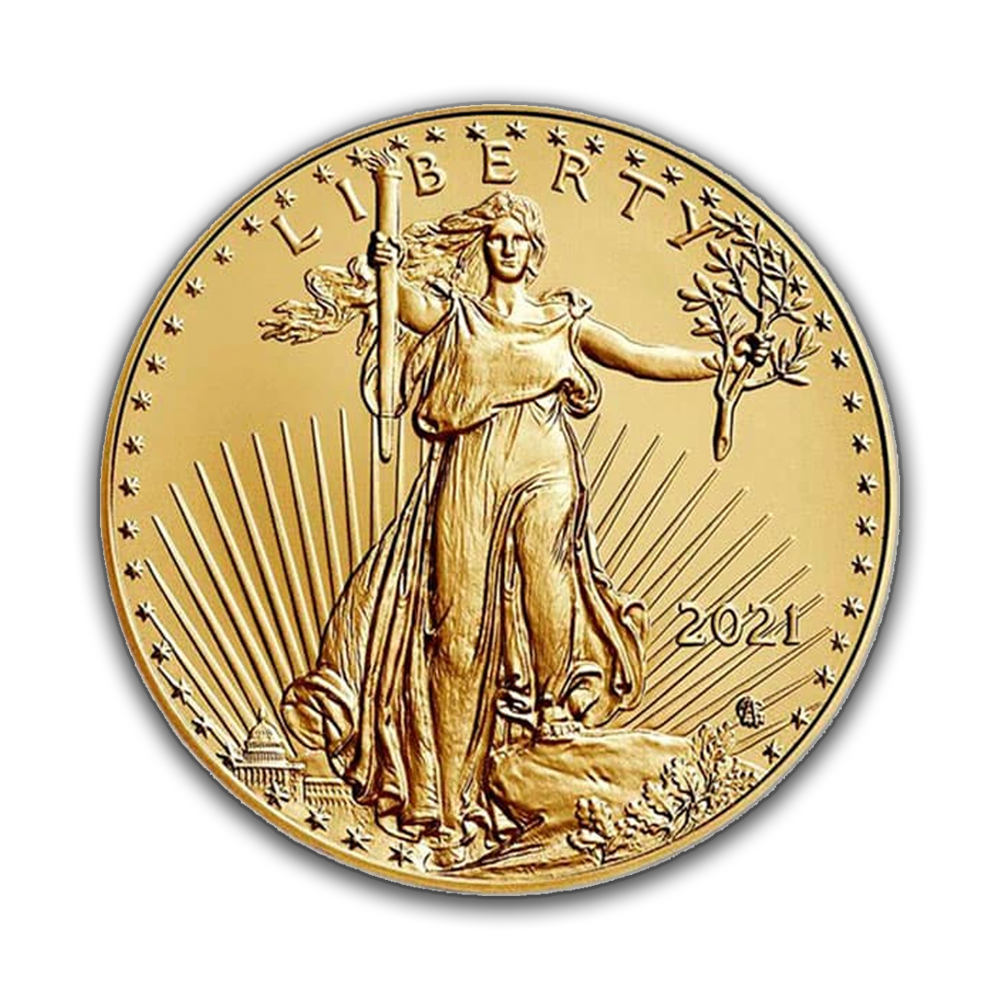Posted on September 28, 2021

The gold South African Krugerrand and American gold eagle coins are so similar in weight, size, thickness, and purity that coin collectors often prefer them. It can be challenging for collectors to decide which of the two coins to add to their collection with so many similarities.
If you’re struggling to choose between these two gold coins, here’s a brief comparison to help you understand the key differences between the two.
 Introduced in 1967, the South African Krugerrand takes its name from the South African Rand, the country’s currency, and Paul Kruger, the former President of the Republic of South Africa. The Krugerrand depicts Paul Kruger as designed by Otto Schultz on the obverse side contained within the words “Suid-Africa” (Afrikaans) and “South Africa.”
Introduced in 1967, the South African Krugerrand takes its name from the South African Rand, the country’s currency, and Paul Kruger, the former President of the Republic of South Africa. The Krugerrand depicts Paul Kruger as designed by Otto Schultz on the obverse side contained within the words “Suid-Africa” (Afrikaans) and “South Africa.”
On the reverse is a springbok, a type of gazelle native to the country. The reverse also denotes the year of minting as well as the weight of the coin. The word “Krugerrand” is displayed at the top.
The gold Krugerrand was the first modern gold bullion coin. As such, it was very popular with U.S. buyers after allowing its citizens to purchase gold in 1975. However, due to apartheid in South Africa, United States Congress passed a law banning Krugerrand coins to the U.S. in 1985. This ban was lifted in 1994, and Americans were once again allowed to purchase the coin.
The gold Krugerrand has a distinctive color due to the 8.3% copper content in its gold alloy. The 1 ounce Krugerrand is by far the most popular, but the coin also comes in sizes of 1/2 ounce, 1/4 ounce, and 1/10 ounce. The South African Mint has minted an estimated 60 million Krugerrand coins since its original minting in 1967.
 First minted in 1986 (the year after the Krugerrand was outlawed), this United States coin quickly became popular among collectors. The gold eagle coin is guaranteed by the U.S. government for weight, content, and purity. The eagle contains 91.67% gold, 5.3% copper, and 3% silver.
First minted in 1986 (the year after the Krugerrand was outlawed), this United States coin quickly became popular among collectors. The gold eagle coin is guaranteed by the U.S. government for weight, content, and purity. The eagle contains 91.67% gold, 5.3% copper, and 3% silver.
Designed by the famous American Renaissance sculptor Augustus Saint-Gaudens, the gold eagle is renowned for its beauty. Saint-Gaudens depicted lady liberty on the front of the coin. (the image of Lady Liberty was first used on American coinage in 1907).
The reverse side — designed by the sculptor Miley Busiek — displays a family of bald eagles along with the phrases “E Pluribus Unum” and “In God We Trust” along with “United States of America”.
In 2021, the American gold eagle was redesigned for its 35th anniversary. While the obverse side of the coin still depicts Lady Liberty, the reverse side uses the design of a bald eagle by wildlife graphic designer Jennie Norris. The profile image of the eagle is a close-up and more detailed than the original minting.
It’s estimated that the U.S. Mint has produced about 18.7 million American gold eagle coins since its first minting in 1986.
Both the gold Krugerrand and gold eagle have many similarities. In fact, the designers of the American gold eagle coin used the dimensions and alloy of the Krugerrand for reference. The two bullion coins have similar features:
Outside of each coin’s design, there are slight differences between the two that distinguish them from one another. The gold eagle is a slightly thicker coin, with the Krugerrand having a slightly bigger diameter. However, these differences are so minor that they are almost indistinguishable to all but the keenest and astute collectors. That is, until you stack them together, which makes their dimensional differences quite apparent.
And while both coins have the same amount of gold content, their alloy differs, with the gold eagle composed of copper and silver alloy and the gold Krugerrand containing just copper alloy. This results in slightly different colors for both coins. The silver alloy in the gold eagle gives it a shinier finish, while the Krugerrand has a distinctive red hue as a result of the higher concentration of copper alloy.
The American gold eagle tends to sell at a price premium to the South African Krugerrand. This is because the Krugerrand has a more active market for sale than the eagle, with more buyers and sellers willing to trade hands at any given time.
There are also more Krugerrand coins in the U.S. due to a significant import of Krugerrands. It’s estimated there may currently be 25 million Kruggerands in the United States, which is more than the total number of gold eagles ever minted. Because there are fewer gold eagle coins to meet demand, dealers charge more premium for transacting in gold eagles, causing them to be priced higher for retail investors and buyers.
|
Bullion Coin: |
Gold Krugerrand |
Gold Eagle |
|
Producing Mint |
South African Mint |
U.S. Mint |
|
Thickness |
2.75 mm |
2.87 mm |
|
Diameter |
32.77 mm |
32.70 mm |
|
Weight |
1 oz (most popular), 1/2 oz, 1/4 oz, and 1/10 oz |
1 oz (most popular), 1/2 oz, 1/4 oz, and 1/10 oz |
|
Alloy |
Copper (8.3%) |
Copper (5.3%) and silver (3%) |
|
Karat |
22-karat |
22-karat |
|
Purity |
91.67% |
91.67% |
|
Face Value |
N/A |
$50 |
|
Edge Design |
Reeded |
Reeded |
|
IRA Eligible? |
No* |
Yes* |
*The IRS has a minimum purity requirement of 99.5%, or 0.995 for gold. However, the only exception to this rule is the gold American eagle coins.
Interested in gold Krugerrands and gold American eagle coins? Buy in stock gold coins now at BullionMax.